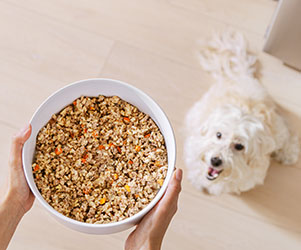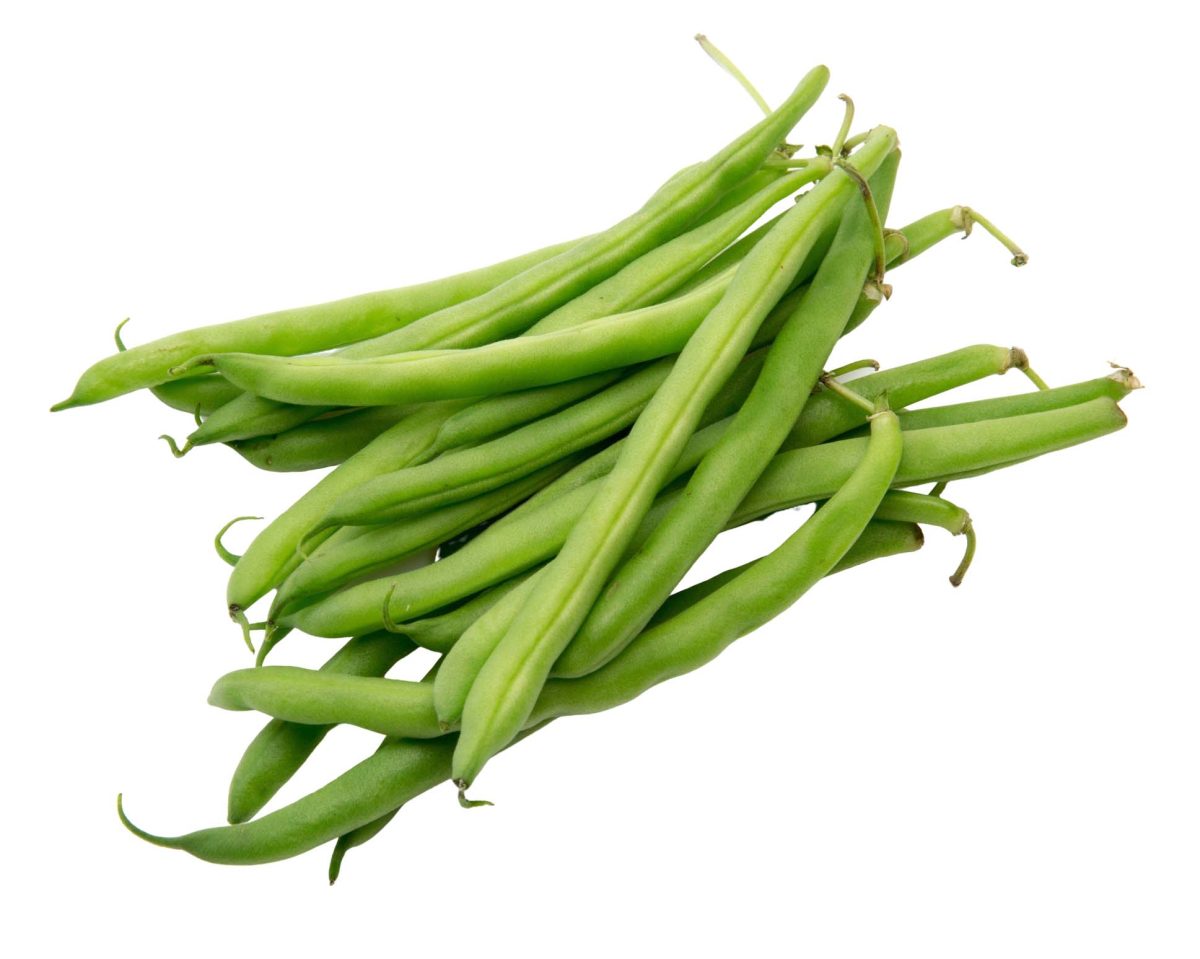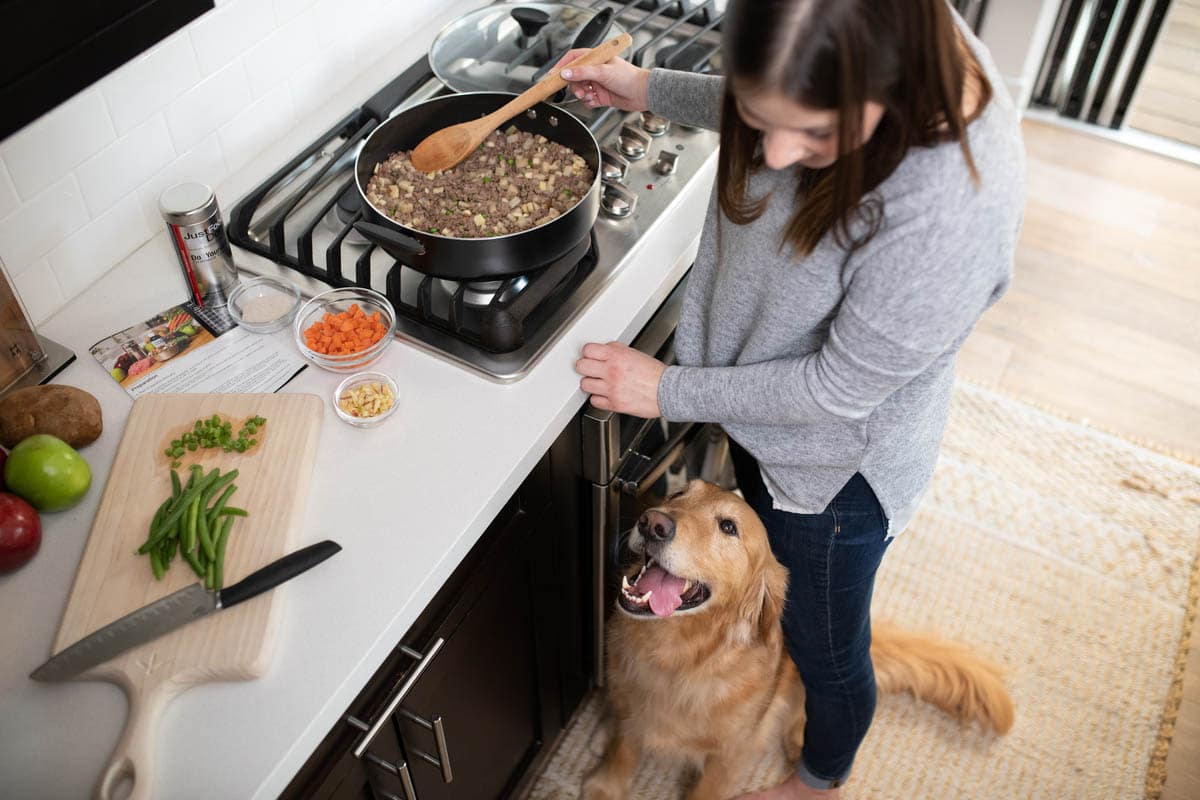Healthy Meat for Dogs
Which proteins are healthy meat for dogs? Read on to learn about the benefits of various protein sources in dog food.
While many people think of dogs as carnivores, the truth is that dogs, like humans, are omnivores. That means they eat a little bit of everything from vegetable matter to meat. Meat is definitely an important part of their diet, but many loving pet parents wonder what is the best meat for their furry friend.
It’s important to understand the nutritional requirements for your best buddy, the health benefits of each, and what the risks are in terms of deficiencies in order to better understand the kind of protein they need. Let’s explore healthy meat for dogs in more depth.
What Does a Healthy Dog Need to Eat?

There are six basic nutrients that your pooch needs to stay healthy. These are the following:
- Water
- Protein
- Fat
- Carbohydrates
- Vitamins
- Minerals.
Water is an essential element for life. Dogs need protein for cellular functions and tissue growth and maintenance. Healthy fat is necessary for essential fatty acids and for absorbing certain vitamins, like Vitamin A.
Carbohydrates are necessary for energy production, and of course, vitamins and minerals are vital for healthy growth and development, a functioning immune system, and tissue maintenance.
Why Is Protein for Dogs Important?
Proteins in dog food are vital for the formation and maintenance of cartilage, tendons, and ligaments. It’s also important for other tissues, including muscle, skin, nails, hair, and blood. Amino acids make up proteins, and when your dog’s body breaks down dietary protein, the amino acids are the essential nutrients they get from that process.
You must include essential amino acids in a pet’s diet. They might be part of the animal or plant protein sources in the food, in which case you won’t see them listed as part of the ingredients. They might be added separately, in which case you will see them listed as part of the ingredients.
The ten essential amino acids for dogs are the following:
- Arginine
- Histidine
- Isoleucine
- Leucine
- Lysine
- Methionine
- Phenylalanine
- Threonine
- Tryptophan
- Valine
What are the Sources of Protein in Dog Food?
Protein comes from both animal and plant sources, but animal protein sources contain the highest amount of essential amino acids. Plant proteins from fruits and veggies are not as digestible because the fiber in plants is not as easy for your dog’s system to digest.
It is possible for a dog to be sustained by a completely plant-based protein diet. If you want to try this for your pooch, you must consult with a veterinary nutritionist to ensure that you’re providing everything needed to maintain your dog’s health. You should also take him to get a check up by your veterinarian twice a year.
Real Meat for Dogs: How Do You Know the Protein Quality in Dog Food?
The label on your dog’s food will include information about the protein content in the food. However, it often indicates the crude protein amount, a catch-all phrase that encompasses the various ways to calculate protein for a particular food.
That doesn’t tell you much about the actual nutritional value of the protein in dry dog food, nor does it indicate the protein quality. A better indicator of protein quality is a measurement known as the biological value (BV). This method measures the amount of nitrogen that is in the body.
You then divide the mount by the mass of nitrogen from the protein in the food. Then, multiply the result by 100. A value of 100% BV indicates that all of the dietary protein your dog eats is absorbed and becomes protein in his body.
Basically, the more of the protein source that converts into essential amino acids and the body’s tissue uses, the higher the quality of that protein source.
How Much Protein Does Your Dog Need?
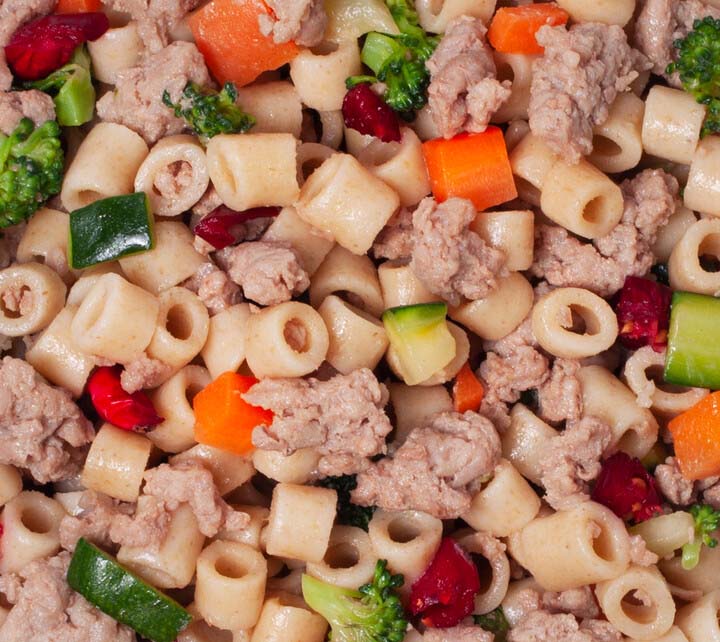
The daily minimum requirement for dietary protein is 18% dry matter (DM) for a growing dog and 8% for an adult dog. This is based on the assumption that you’re feeding a high-quality protein, and you may need to feed more if the protein is low-quality or if you have a particularly active dog.
This is the minimum recommended amount of protein, but the Association of American Feed Control Officials (AAFCO) recommends 22% DM for growth and 18% DM for maintenance in adult dogs. They recommend that for any life stage, protein content should not exceed 30% DM.
These percentages, however, can be confusing for dog owners. To realistically calculate your dog’s protein needs, the first step is to work with your veterinarian to determine how many calories he needs each day. That is based on his age, lifestyle, and body condition score.
Once you know that, you can use the following equation to calculate your dog’s energy needs:
30 X your dog’s weight in kg (take his weight pounds and divide by 2.2) + 70 = daily caloric needs, including meals, snacks, and treats
Be aware that this formula is for a dog who lives inside your home, gets light exercise daily, and is spayed or neutered. Once you know his caloric needs, you can calculate the percentage that should come from protein sources.
Why Might Your Dog Need a Low-Protein Diet?
There are occasions when your veterinarian might prescribe a low-protein diet for your pooch. This is usually due to the need to manage certain diseases, such as kidney disease or liver disease.
A byproduct of protein breakdown is ammonia, which is toxic to tissue and cells. The majority of ammonia in the body (90%) occurs in the kidneys and liver. If those organs are failing, your veterinarian might recommend reducing the workload on those organs by limiting protein intake and reducing the amount of ammonia.
Of course, it is always a good idea to speak with your veterinarian before making changes to his diet. With all of this in mind, what type of meat is healthiest for your dog?
What Is the Best Meat for Your Dog?

If you’re looking at a meat diet for your pooch, what are some of the best protein sources? Let’s look at different types of meat available in various dog food recipes.
Beef
Of course, red meat, like ground beef, is a commonly available option for dogs. But meat meals in dog food often include non-saleable or non-useable body parts rather than human-grade ingredients.
Additionally, they are ground and dried at hot temperatures, which often reduces their nutritional value. Therefore, it’s best to feed your dog beef dog food with a higher protein content. If you can pay a little extra, it may be worthwhile to purchase organic beef with a lower fat content.
Kangaroo Meat
This is a more difficult meat to find for your dog, but it is a good novel protein option. It has a low-fat content and high-protein combination, and it is rich in various minerals and vitamins.
At 2% fat, kangaroo is a lean meat that is also high in essential B vitamins, and certain minerals, such as zinc and iron. It has double the amount of iron as beef, and it has triple the amount as compared to pork and chicken. It also contains omega 3 and omega 6 fatty acids.
Chicken
Chicken is a lean protein and the most commonly available of the various types of meat you might feed your dog. When your dog has a sensitive stomach, your vet may recommend a diet of plain chicken and rice.
Kibble manufacturers use it heavily in commercial dog foods because it costs less. From a nutrition standpoint, however, it may not be your best option.
Chickens kept in coops throughout their life often suffer from Vitamin D deficiencies, which affects their meat. Chicken dog food may also lack natural antioxidants because of the poor quality man-made diets they are fed. Unless you have access to wild chickens, it’s better to choose another type of meat for your dog.
Turkey Meat
Turkey is a good source of protein and a healthier option for your dog than chicken since it has more white meat (70%). Turkey dog food may have a higher protein content and a lower fat content. It’s also rich in various minerals, including phosphorus, potassium, zinc, and vitamins like niacin and B6.
As a side note, many loving pet parents like to share their Thanksgiving feast with their fur babies. While done with good intentions, it may have harmful results. When dogs eat human foods to which they are unaccustomed, it can overstimulate their pancreas and cause inflammation.
This condition is known as pancreatitis and results in vomiting and diarrhea. Additionally, if your pooch gets into the turkey bones, they can cause gastrointestinal problems. It’s best to avoid giving your dog foods that they are not used to eating.
Goat Meat
Surprisingly, goat is one of the most widely consumed meats, but for your dog, feral goat meat is the better choice. It is typically lower in calories than pork, lamb, and beef, and it is lower in fat and cholesterol than chicken. It is also higher in iron content than beef.
Venison (Deer Meat)
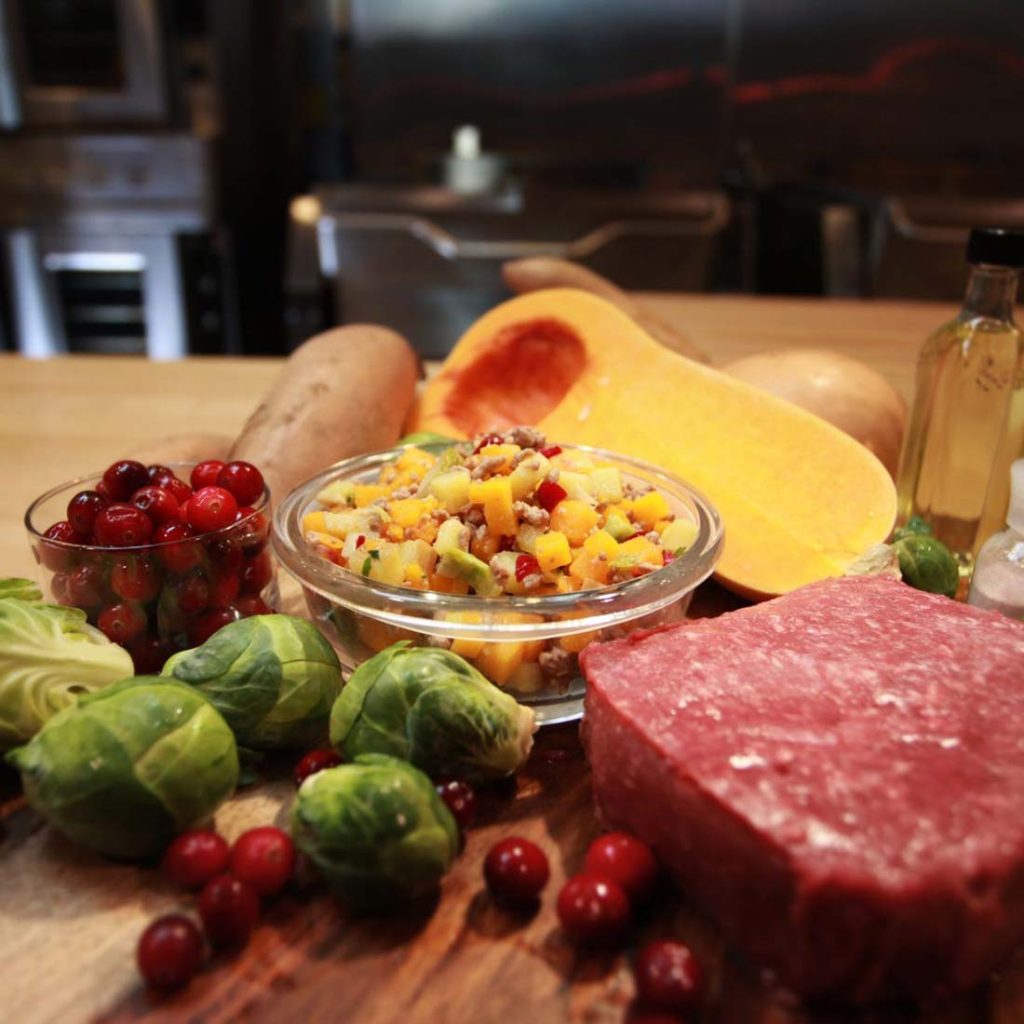
Venison is a healthy meat for dogs with lots of B vitamins for energy. It also has the perfect amount of zinc and iron to support a healthy immune system and organ function. It’s also a good choice for dogs with food allergies.
Many dogs have food allergies that are linked to more familiar protein sources, so venison is a good option. The symptoms of a dog food allergy include things like a rash on his legs and belly, itchy skin, and gastrointestinal problems like diarrhea or vomiting.
Venison dog food is also a leaner option for your dog, and if he is overweight, this could be a good solution. It is naturally lean and has less fat and cholesterol than other choices.
Lamb Meat
Lamb is another great protein source for canines you can find in freeze-dried and air-dried dog food. It is becoming increasingly popular in commercial pet food brands. Lamb and lamb liver contain heaps of essential amino acids as well as healthy dietary fats for energy.
Lamb dog food is also a great choice for dogs with food sensitivities since it is highly digestible. It is the protein source of choice for dogs suffering from gastrointestinal health challenges.
Fish
Fish like whitefish is an excellent source of protein as well as omega-3 fatty acids. Many dogs also really like fish, and it is easy for them to digest. Moreover, it is readily available and pet parents can add it as a protein source in homemade dog food.
What Is the Best Cut of Meat for Dogs?
As far as the cut of meat goes for dog food or even jerky treats, the best options are those that are lean and have minimal fat. Some of the better options for lean meat cuts are chicken breasts, lean cuts of beef such as sirloin or flank steak, and pork tenderloin.
You can boil, bake, or grill these kinds of cuts, but avoid adding seasonings or other ingredients that might be harmful to your dog. You’ll also want to include a variety of meats so you can ensure your dog has a well-rounded diet.
It’s also important to remember that meat should not be the sole ingredient in your dog’s diet. Dogs, like humans, need a balanced diet that includes not only protein but carbohydrates and healthy fats. While it is true that dog digestive systems are adapted to break down and absorb the nutrients found in meat, they require other nutritional sources as well.
Should You Feed Your Dog Raw Meat?
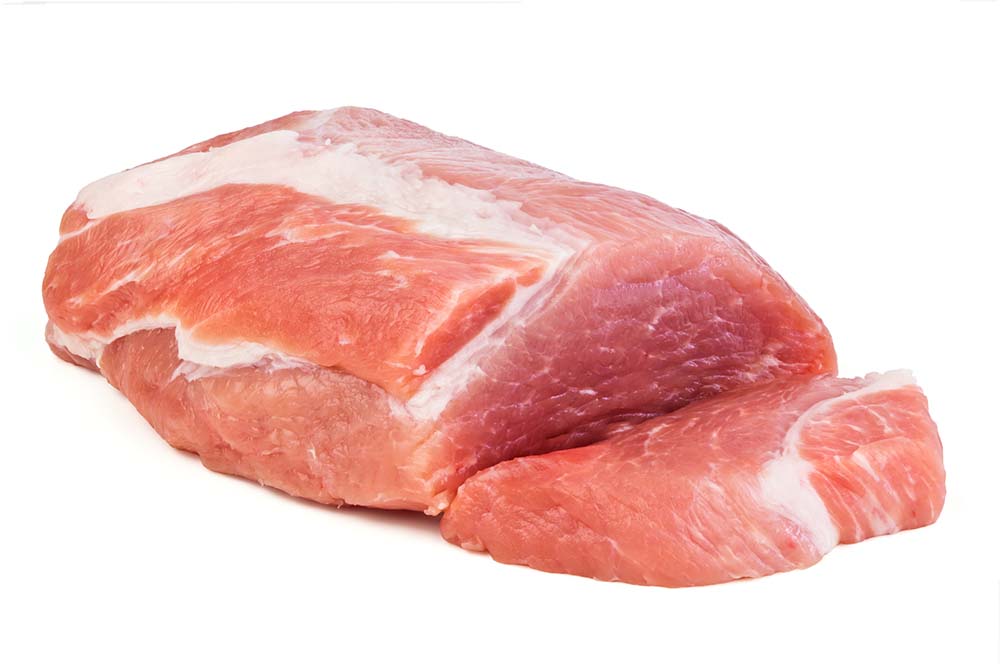
This is a somewhat controversial topic these days. While dogs are able to digest both cooked and raw food, and many people advocate for a raw meat diet, there are some risks. One of the biggest risks is the possibility of bacterial contamination.
Bacteria, like salmonella, can pose a risk to your dog’s health if you’re not very careful with feeding raw meat. It can also pose a risk to you or anyone who prepares the food for your dog.
Additionally, there is a risk of parasitic infections with feeding raw meat. Certain parasite eggs and larval forms can be present in meat, and if it is not cooked, it can create a health issue for your beloved pet. As a precaution, pet owners should always feed dogs cooked meat.
While some dogs may prefer the taste and texture of raw meat, the risks may outweigh any potential benefits or taste preferences. The most important thing to remember is that your dog’s diet is balanced and meets all of his nutritional needs.
What Should You Look for in a Dog Food?
Of course, the best advice is to try to feed your dog the highest-quality food you can afford. Check the ingredients to ensure they meet the minimum daily requirements, and try to choose foods that meet the following criteria:
- They contain real, recognizable, whole-food ingredients
- The ingredients are familiar to you
- They have a minimal amount of preservatives and food additives
High-Quality Dog Food Options
Seek fresh human-grade nutrition using whole-food ingredients to support a foundation for your dog’s health and wellness. Fresh dog food (and cat food!) and quality dog treats are free of harmful preservatives and food additives. JFFD uses different protein sources in balanced recipes that include healthy fats and carbohydrates. Pet parents can use fresh dog food as a topper or full meal.
This content is for informational use only and does not replace professional nutrition and/or medical advice, diagnosis, or treatment. It is not a substitute for specific nutrition and/or medical recommendations. Please talk with your veterinarian about any questions or concerns.





